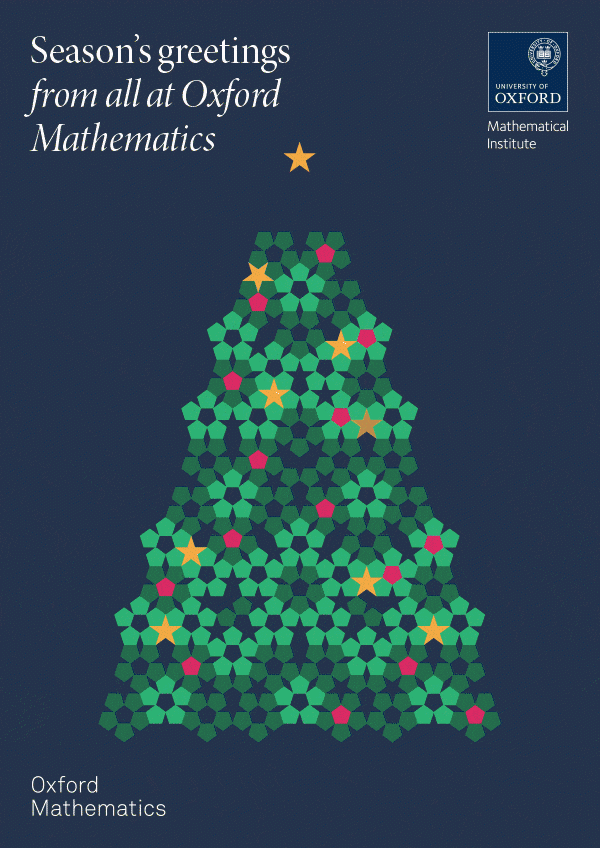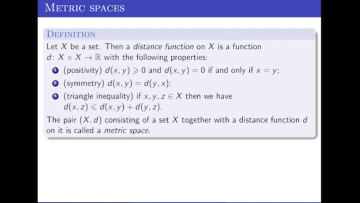REACT-1 round 7 updated report: regional heterogeneity in changes in prevalence of SARS-CoV-2 infection during the second national COVID-19 lockdown in England
Riley, S
Walters, C
Wang, H
Eales, O
Ainslie, K
Atchison, C
Fronterre, C
Diggle, P
Ashby, D
Donnelly, C
Cooke, G
Barclay, W
Ward, H
Darzi, A
Elliott, P
2020.12.15.20248244
(16 Dec 2020)
Follow-up of astrophysical transients in real time with the IceCube
Neutrino Observatory
Abbasi, R
Ackermann, M
Adams, J
Aguilar, J
Ahlers, M
Ahrens, M
Alispach, C
Jr, A
Amin, N
An, R
Andeen, K
Anderson, T
Ansseau, I
Anton, G
Argüelles, C
Axani, S
Bai, X
V, A
Barbano, A
Barwick, S
Bastian, B
Basu, V
Baum, V
Baur, S
Bay, R
Beatty, J
Becker, K
Tjus, J
Bellenghi, C
BenZvi, S
Berley, D
Bernardini, E
Besson, D
Binder, G
Bindig, D
Blaufuss, E
Blot, S
Böser, S
Botner, O
Böttcher, J
Bourbeau, E
Bourbeau, J
Bradascio, F
Braun, J
Bron, S
Brostean-Kaiser, J
Burgman, A
Busse, R
Campana, M
Chen, C
Chirkin, D
Choi, S
Clark, B
Clark, K
Classen, L
Coleman, A
Collin, G
Conrad, J
Coppin, P
Correa, P
Cowen, D
Cross, R
Dave, P
Clercq, C
DeLaunay, J
Dembinski, H
Deoskar, K
Ridder, S
Desai, A
Desiati, P
Vries, K
Wasseige, G
With, M
DeYoung, T
Dharani, S
Diaz, A
Díaz-Vélez, J
Dujmovic, H
Dunkman, M
DuVernois, M
Dvorak, E
Ehrhardt, T
Eller, P
Engel, R
Evans, J
Evenson, P
Fahey, S
Fazely, A
Fiedlschuster, S
Fienberg, A
Filimonov, K
Finley, C
Fischer, L
Fox, D
Franckowiak, A
Friedman, E
Fritz, A
Fürst, P
Gaisser, T
Gallagher, J
Ganster, E
Garrappa, S
Gerhardt, L
Ghadimi, A
Glaser, C
Glauch, T
Glüsenkamp, T
Goldschmidt, A
Gonzalez, J
Goswami, S
Grant, D
Grégoire, T
Griffith, Z
Griswold, S
Gündüz, M
Haack, C
Hallgren, A
Halliday, R
Halve, L
Halzen, F
Minh, M
Hanson, K
Hardin, J
Harnisch, A
Haungs, A
Hauser, S
Hebecker, D
Helbing, K
Henningsen, F
Hettinger, E
Hickford, S
Hignight, J
Hill, C
Hill, G
Hoffman, K
Hoffmann, R
Hoinka, T
Hokanson-Fasig, B
Hoshina, K
Huang, F
Huber, M
Huber, T
Hultqvist, K
Hünnefeld, M
Hussain, R
In, S
Iovine, N
Ishihara, A
Jansson, M
Japaridze, G
Jeong, M
Jones, B
Joppe, R
Kang, D
Kang, W
Kang, X
Kappes, A
Kappesser, D
Karg, T
Karl, M
Karle, A
Katz, U
Kauer, M
Kellermann, M
Kelley, J
Kheirandish, A
Kim, J
Kin, K
Kintscher, T
Kiryluk, J
Klein, S
Koirala, R
Kolanoski, H
Köpke, L
Kopper, C
Kopper, S
Koskinen, D
Koundal, P
Kovacevich, M
Kowalski, M
Krings, K
Krückl, G
Kurahashi, N
Kyriacou, A
Gualda, C
Lanfranchi, J
Larson, M
Lauber, F
Lazar, J
Leonard, K
Leszczyńska, A
Li, Y
Liu, Q
Lohfink, E
Mariscal, C
Lu, L
Lucarelli, F
Ludwig, A
Luszczak, W
Lyu, Y
Ma, W
Madsen, J
Mahn, K
Makino, Y
Mallik, P
Mancina, S
Mariş, I
Maruyama, R
Mase, K
McNally, F
Meagher, K
Medina, A
Meier, M
Meighen-Berger, S
Merz, J
Micallef, J
Mockler, D
Momenté, G
Montaruli, T
Moore, R
Morse, R
Moulai, M
Naab, R
Nagai, R
Naumann, U
Necker, J
Nguyên, L
Niederhausen, H
Nisa, M
Nowicki, S
Nygren, D
Pollmann, A
Oehler, M
Olivas, A
O'Sullivan, E
Pandya, H
Pankova, D
Park, N
Parker, G
Paudel, E
Peiffer, P
Heros, C
Philippen, S
Pieloth, D
Pieper, S
Pizzuto, A
Plum, M
Popovych, Y
Porcelli, A
Rodriguez, M
Price, P
Pries, B
Przybylski, G
Raab, C
Raissi, A
Rameez, M
Rawlins, K
Rea, I
Rehman, A
Reimann, R
Renschler, M
Renzi, G
Resconi, E
Reusch, S
Rhode, W
Richman, M
Riedel, B
Robertson, S
Roellinghoff, G
Rongen, M
Rott, C
Ruhe, T
Ryckbosch, D
Cantu, D
Safa, I
Herrera, S
Sandrock, A
Sandroos, J
Santander, M
Sarkar, S
Satalecka, K
Scharf, M
Schaufel, M
Schieler, H
Schlunder, P
Schmidt, T
Schneider, A
Schneider, J
Schröder, F
Schumacher, L
Sclafani, S
Seckel, D
Seunarine, S
Shefali, S
Silva, M
Skrzypek, B
Smithers, B
Snihur, R
Soedingrekso, J
Soldin, D
Spiczak, G
Spiering, C
Stachurska, J
Stamatikos, M
Stanev, T
Stein, R
Stettner, J
Steuer, A
Stezelberger, T
Stokstad, R
Stuttard, T
Sullivan, G
Taboada, I
Tenholt, F
Ter-Antonyan, S
Tilav, S
Tischbein, F
Tollefson, K
Tomankova, L
Tönnis, C
Toscano, S
Tosi, D
Trettin, A
Tselengidou, M
Tung, C
Turcati, A
Turcotte, R
Turley, C
Twagirayezu, J
Ty, B
Elorrieta, M
Vandenbroucke, J
Eijk, D
Eijndhoven, N
Vannerom, D
Santen, J
Verpoest, S
Vraeghe, M
Walck, C
Wallace, A
Watson, T
Weaver, C
Weindl, A
Weiss, M
Weldert, J
Wendt, C
Werthebach, J
Weyrauch, M
Whelan, B
Whitehorn, N
Wiebe, K
Wiebusch, C
Williams, D
Wolf, M
Woschnagg, K
Wrede, G
Wulff, J
Xu, X
Xu, Y
Yanez, J
Yoshida, S
Yuan, T
Zhang, Z
The Astrophysical Journal: an international review of astronomy and astronomical physics
http://arxiv.org/abs/2012.04577v1
Neutrino Observatory
Practical considerations for measuring the effective reproductive number, Rt
Gostic, K
McGough, L
Baskerville, E
Abbott, S
Joshi, K
Tedijanto, C
Kahn, R
Niehus, R
Hay, J
De Salazar, P
Hellewell, J
Meakin, S
Munday, J
Bosse, N
Sherrat, K
Thompson, R
White, L
Huisman, J
Scire, J
Bonhoeffer, S
Stadler, T
Wallinga, J
Funk, S
Lipsitch, M
Cobey, S
PLoS Computational Biology
volume 16
issue 12
(10 Dec 2020)
A Randomized Algorithm to Reduce the Support of Discrete Measures.
Cosentino, F
Oberhauser, H
Abate, A
NeurIPS
(01 Jan 2020)
Gibbs flow for approximate transport with applications to Bayesian computation
Heng, J
Doucet, A
Pokern, Y
Journal of the Royal Statistical Society: Series B (Statistical Methodology)
volume 83
issue 1
156-187
(20 Jan 2021)
The Oxford Mathematics e-newsletter for December is out. Produced each quarter, it's a sort of 'Now That's What I Call Maths,' pulling together our greatest hits of the last few months in one place.
It's for anyone who wants a flavour of what we do - research, online teaching, public lectures, having a laugh.
And it's COVID-lite. Click here.
SafePILCO: A Software Tool for Safe and Data-Efficient Policy Synthesis
Polymenakos, K
Rontsis, N
Abate, A
Roberts, S
Lecture Notes in Computer Science
volume 12289
18-26
(03 Nov 2020)
Over the past few weeks we have made 7 undergraduate lectures publicly available, sampling a range of topics from Geometry to Differential Equations. Today & over the next 2 weeks for the first time we're showing a full course on our YouTube Channel. Ben Green's 2nd Year 'Metric Spaces' (the first half of the Metric Spaces and Complex Analysis course)' gets to grips with the concept of distance.





